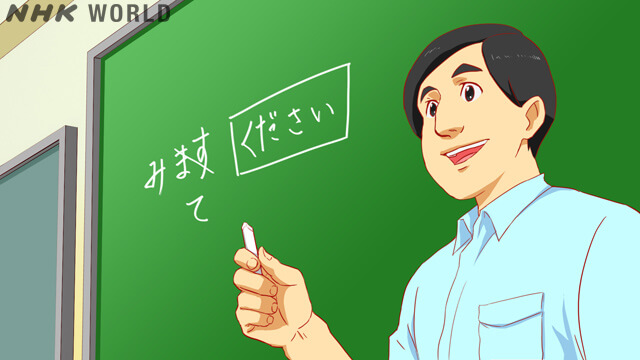
Anna is now sitting in Professor Suzuki's class in Japanese at the university.




When we use verbs in the middle of sentences, that is, when we add other words after them, we use their conjugated forms.
The verbs that conjugate, ending with TE, are called "TE-form verbs."
e.g.) OBOEMASU (to memorize) >> OBOETE
Please go to "Learning Tools".
TE-form verb + KUDASAI
When you ask somebody to do something in Japanese, you say TE-form verbs and then KUDASAI (Please, or I would ask you to). The TE-form verbs are the conjugated form of verbs that end with TE or DE.
Heart beating
Japanese is a language with lots of onomatopoeia. A wide range of onomatopoeia in the Japanese language, from noises made by animals to expressions of feelings, is explained by audio.